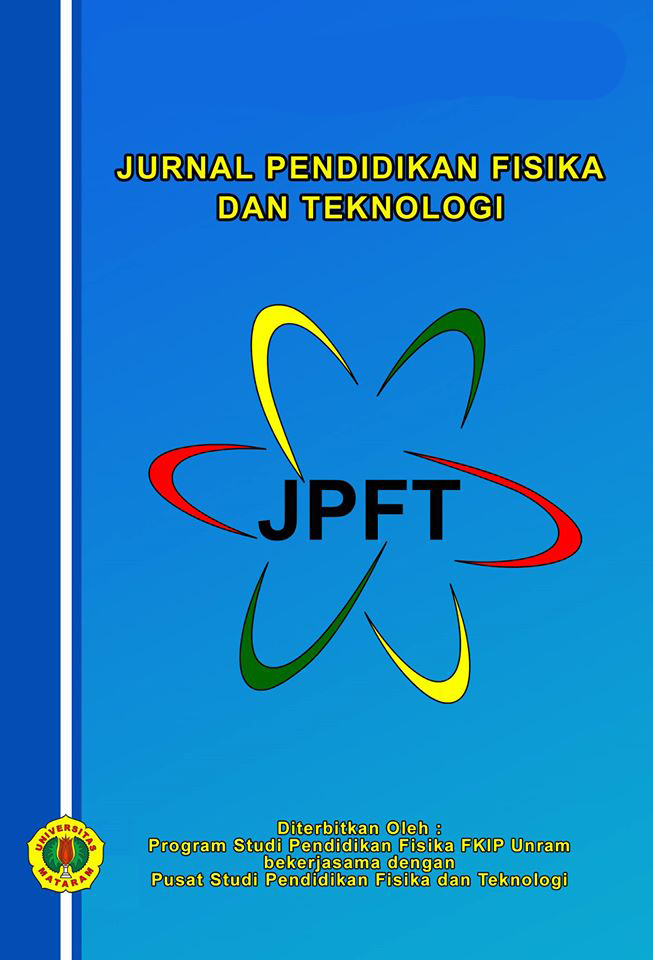Analysis of Chemical Compound Content and Magnetic Properties of Iron Sand in Rondo Woing Village, East Manggarai
DOI:
10.29303/jpft.v9i1.4897Published:
2023-06-24Issue:
Vol. 9 No. 1 (2023): January - JuneKeywords:
Iron sand, , Iron (fe),, calcium (Ca), Methanol Soap Bathed (MSB)Articles
Downloads
How to Cite
Downloads
Metrics
Abstract
The mine sand extraction process used the Methanol Soap Bathed (MSB) method. The results of sample analysis using XRF and VSM (Vibrating Sample Magnetometer) obtained that the most dominant compound content was Silica (SiO2), Iron (Fe2O3), Quicklime (CaO), and Alumina (Al2O3). At the same time, the sample results from the Vibrating Sample Magnetometer (VSM) show that Rondo Woing East Manggarai iron sand has soft magnetic properties. The iron sand sample with code 001 has Hc, Mr, and Ms of 324.83 Oe, 0.31 emu/gram, and 1.61 emu/gram, respectively. The iron sand sample with code 002 has Hc, Mr, and Ms of 319.91 Oe, 0.31 emu/gram, and 1.6 emu/gram, respectively. The results of the analysis show that four dominant elements are the same; namely, Fe is the most dominant element in Fe2O3 compounds, with 32.3%, Al elements in Al2O3 compounds, with levels of 13%, Si in SiO2 compounds with levels of 31.1% and Ca in a CaO compound with a content of 17.7% and Ti in a TiO2 compound of around 2%, so that the iron sand at Rondo Woing shows magnetic material properties.
References
Adi, A. (2018). Analisa Penggunaan Pasir Silika sebagai pengganti agregat halus pada campuran beton. Jurnal Riset Pembengunan, 36. https://doi.org/doi:Https://Doi.Org/10.36087/Jrp.V1i1.25
Aji, N. S. (2014). Pembangunan Industri Penambangan dan Pengolahan Pasir Besi serta Implikasinya Terhadap Ketahan Ekonomi wilayah (Studi di Kabupaten Kulon Progo Daerah Istimewa Yogyakarta). Jurnal Ketahanan Nasional, 2(XX), 78–86.
Aritonang, S., Jupriyanto, & Juhana, R. (2019). Analisis Proses Pengolahan Pasir Besi Menjadi Besi Spon Dalam Rangka Mendukung Industri Pertahanan Bahan Baku Baja. Media.Nelti.Com.
Asri. (2019). Sintesis Dan Analisis Kandungan Mineral Dan Karakteristik Sifat Listrik Nanopartikel Pasir Besi Di Pantai Telindung Kabupaten Lombok Timur.Universitas Islam Negeri Mataram.
Firjatullah, B. A., Teguh, M., & Saputra, E. (2022). Optimalisasi Penggunaan Pasir besi sebagai pengganti agregat halus dalam campuran beton mutu tinggi. Teknisia, 27(01), 24–33.
Fitri, I. (2016). Analisis Kandungan Mineral logam singkapan batuan di Kawasan Pertambanagan Mangan Desa Kumbewaha Kecamatan Siotapina Buton dengan menggunakan metode X-RF. Palu: Universitas Haluleo.
Ghandoor, H. E., Zidan, H., & Khalil, M. M. (2012). Synthesis and Some Physical Properties of Magnetite (Fe3O4) Nanoparticles. International Journal of Electrochemical Science, 5734 - 5745. Retrieved from http://www.electrochemsci.org
Indrayana, I. (2019). SINTESIS, Karakterisasi, Dan Fungsionalisasi Hingga Aplikasinya Dalam Bidang Nanoteknologi Maju. Jurnal UNIERA, 8(2), 66.
Juharni. (2016). Karakteristik Pasir Besi Di Pantai Marina Kabupaten Bantaeng. UIN ALAUDIN Makasar.
Junursyah, G. M. L., & Rahmat, W. (2019). G.M. Lucki Junursyah & Wanda Rahmat,2019. Potensi Endapan Pasir Besi di Daerah Grabag dan Sekitarnya Berdasarkan Data Geomagnet. Jurnal Geologi Dan Sumberdaya Mineral, 20(2), 57 – 83.
Losa, F. I. (2013). Studi Kelayakan Material Gunung Naru Dalam Penggunaannya Sebagai Salah Satu Material Beton. Universitas Tribhuwana Tunggadewi.
Rifai, H., Erni, & Irvan, M. (2010). Ekstraksi Magnetik pada Methanol-Soap Bathed Muds. Jurnal Penelitian Sains, 141(B)), 25 -28.
Ruth, S., & Gustina, V. (2022). Indikator Kesejahteraan Rakyat Kabupaten Manggarai Timur, Nusa Tenggara Timur, Indonesia: Badan Pusat Statistik.
Sari, L. V., & Manurung, P. (2019). Pengaruh Variasi Konsentrasi Hcl Pada Pembentukan Nanosilika Berbasis Batu Apung. Jurnal Teori Dan Aplikasi Fisika, 7(2), 161–168. https://doi.org/Https://Doi.Org/10.23960/Jtaf.V7i2.1945
Tebriani, S. (2019). Analisis Vibrating Sample Magnetometer (VSM) Pada Hasil Elektrodeposisi Lapisan Tipis Magnetite Menggunakan Arusconting Direct Current. Jurnal Natural Science, 5(1), 722–730.
Tellu, N., Koly, F., & Karbeka, M. (2020). Karakterisasi Sifat Kemagnetan Pasir Besi Pantai Puntaru Kabupaten Alor-Ntt. Journal Lantanida, 8(2), 96–188.
Widianto, E., & Fauji, N. (2018). Karakterisasi Pasir besi Alam Pantai Samudera Baru dan pemanfaatannya sebagai Filter pada sistem Penyaring Elektromagnetik. Jurnal Riset Sains Dan Teknologi, 2(12), 15–21.
Author Biographies
Hartoyo Yudhawardana, Nusa Cendana University
Physics Education Program Study
Heri F. Lalus, Nusa Cendana University
Physics Education Study Program
License
Copyright (c) 2023 Hartoyo Yudhawardana, Heri F. Lalus

This work is licensed under a Creative Commons Attribution-ShareAlike 4.0 International License.
Authors who publish with Jurnal Pendidikan Fisika dan Teknologi (JPFT) agree to the following terms:
- Authors retain copyright and grant the journal right of first publication with the work simultaneously licensed under a Creative Commons Attribution License 4.0 International License (CC-BY-SA License). This license allows authors to use all articles, data sets, graphics, and appendices in data mining applications, search engines, web sites, blogs, and other platforms by providing an appropriate reference. The journal allows the author(s) to hold the copyright without restrictions and will retain publishing rights without restrictions.
- Authors are able to enter into separate, additional contractual arrangements for the non-exclusive distribution of the journal's published version of the work (e.g., post it to an institutional repository or publish it in a book), with an acknowledgement of its initial publication in Jurnal Pendidikan Fisika dan Teknologi (JPFT).
- Authors are permitted and encouraged to post their work online (e.g., in institutional repositories or on their website) prior to and during the submission process, as it can lead to productive exchanges, as well as earlier and greater citation of published work (See The Effect of Open Access).











